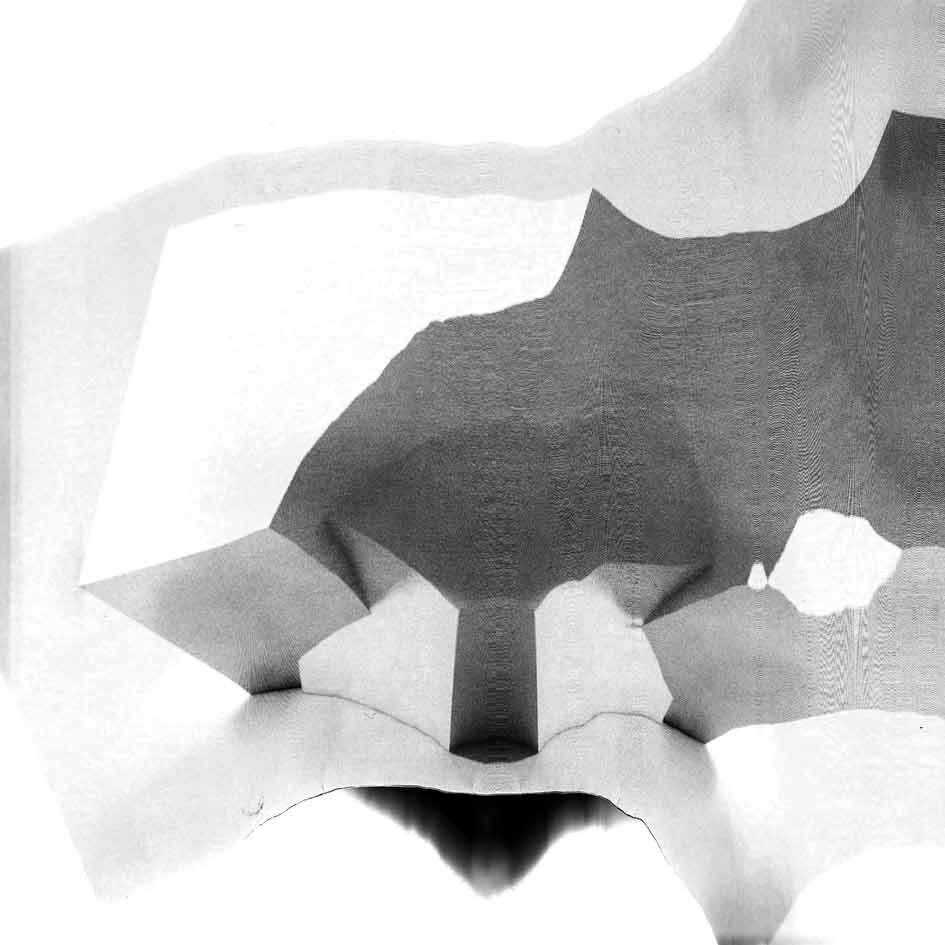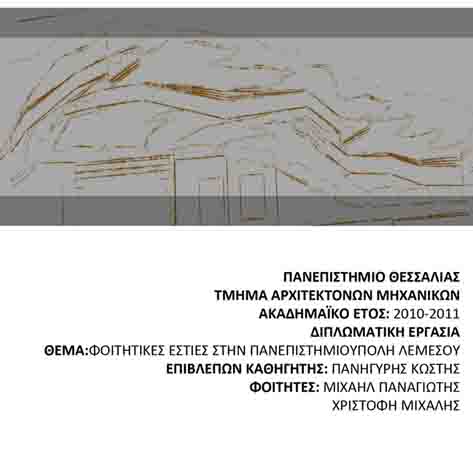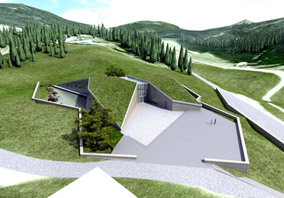

Main objective of this paper is to establish a method of time deformations able to map out the transformations that occur in a conceived space as its experience moves from the objective time-line to the subjective. As every spatial experience is a subjective one inside the boundaries of an objective often designed space, in this project we would like to dwell in the realm of subjective architecture.
To better define a subjective time-line we should consider memory. According to our previous paper memory is a function running simultaneously with cognition, and not on recall as is often considered to be the case. In doing so its inseparable from the subjective experience in a way that the subjective memory time forms an elastic interdependent relationship with the remembered space. In this project we explore elasticity.
Considering flow to be an axiomatic property of time, we extrude movements inside experienced spaces to the temporal dimension of their experience. By deforming space-time systematically we are able to reverse engineer the architectural elements to their original position, and in doing so we witness structures of conception.
Supervisor: Oreopoulos Philippos
Reference Number: 341


Subject of our study is the western seafront of Volos, the area between the torrent Xiria and the wetland Bourboulithra. Approaching the area and taking into account the numerous consecutive episodes, we attempt a restructuring of the landscape. Our wish was to link people with the coastline and to define-protect the wetland from human intervention.
A series of touring in the wetland has led us to highlight the multiple facets of the flow of the place, from the paths, through the reeds, through reeds and the water, to the water. At the same time, it is detected a number of stops-rest zones, some of them are naturally made by reeds and some are artificially constructed by fishermen. The cause of the proliferation of movements in the landscape is the source, the mother as saying the fishermen of the area. Our goal was to transfer in some way, in our own scripture, these complex of features in the landscape. We tried to create a system of routes and stop-rest zones with reference center the wetland, although the core is the recently constructed bridge.
Supervisor: Triantafillidis Giorgos
Reference Number: 357


This particular dissertation is going to present the study that took place for the rehabilitation of the formerly water-moving industrial building which roofed the weaving mill of Faka-Gougouliana-Meska and is located in the “Ladomili” district in Veria. Also, a proposal will be presented for the reuse and conversion of the building into a Municipal Training Institute for Applied Arts.
Firstly, the background of the historic development of Veria’s city is examined, as well as of its industry; also, the industrial building’s development throughout the years is mentioned. This particular factory was built in 1880 at the corner of Pierion and Thomaidou streets in order to function as an oil mill. It converted into a weaving mill in 1920, whereas today is occupied by homeless families. An analysis of the old factory’s architecture and structure is conducted, and the building’s pathology is examined before the proposal’s presentation for the building’s rehabilitation and reuse.
Due to the decision for revealing the building’s primary condition, efforts were made to recall all the interventions that took place throughout the previous years. The new constructions are going to be modern, discrete, using new materials and will clearly indicate their modern characteristics. Also, the creation of two new buildings was considered to be necessary; their main characteristic will be the inclined triangulations that begin from the ground and rise up to the roof of the constructions, creating optical “peelings” of the plot. Green belts will be created in the same way. Finally, the construction of an underground parking lot.
The reuse of our industrial heritage is one of the most timely matters concerning the protection of the architectural and technological heritage, as well as that of the modern architecture. It may be our last chance to project and valorize that important heritage before it gets lost once and for all, as long as we project it and manage it according to modern terms and respect.
Supervisor: Adamakis Kostas
Reference Number: 337


The subject of diploma project concerns the study and planning of student residences on the campus of Intercollege in Palodia (Limassol, Cyprus). The region of study is found in amphitheatrically valley with steep slope. Objective of study is the creation of residential colleges on campus that will accommodate 500-600 students. Also maintaining the topography and the least possible impact on the natural ground, it is a rule in our study.
Taking into consideration the above, a building with base the morphology of ground is the initial confrontation of subject. Afterwards the building takes the form of road-trail that climbs the mountain. In step with the process of planning of form of building was realized also a research for the typologies of housing in student dormitories. The main part of the building program of study are residences for students. Also the project includes spaces of quartering, communal spaces (gym, swimming pool, etc), courses - path.
Entire the building is found under bent 5%. It is constituted by 4 levels. 1st level: spaces of quartering, 2nd level: ground floor, 3rd level: 1st floor and 4th level: 2nd floor. The building is constituted by 9 residences AMEA, 33 apartments (10 students) with 8 bedrooms, 24 apartments (3 students ) with 3 bedrooms, 45 apartments ( 3 students) with 2 bedrooms and 57 apartments ( 1 student ) , 2 gyms, 2 swimming pools and 4 communal living rooms. Can accommodate 201 students on each floor. Total 603 students.
Supervisor: Paniyiris Costis
Reference Number: 322


In the city of Volos there are about 5000 students, the city is the home of the University of Thessaly. The University currently can provide accommodation for 40 students. The terms of use depends of financial and family circumstances.
Our project’s subject is the creation of a new students’ centre of the University of Volos with the capacity to accommodate 234 students.
The building complex will also has a lending library, play rooms, sports sites, restaurant, an amphitheatre and an enclosed swimming pool.
The site chosen for building complex located in Neapoli near Volos’ Areos Park, where there are established the majority of the polytechnics schools of the University of Thessaly.
The dimensions of the site is 200 meters x 70 meters. This plot was chosen not only on size but mainly based on its location and its accessibility from the avenue of Athens and on the ground that is not in the dense urban fabric of the city, offering greater peace of mind to students who will live there and the comfort to create the necessary parking spaces.
However, has a direct connection to public transport because it is less than a kilometre from the train station and approximately 500 meters from the bus station, offering thus a direct link for students to the centre of the city.
The building program of the group of student halls include analytically the following areas :
1. Parking areas : 2400 m2 (64 seats for cars)
2. Auditorium : 215 m2 (132 spectators)
3. Reception - Refreshments: 430 m2
4. Restaurant: 550 m2 (208 people)
5. Cuisine Restaurant: 190 m2
6. Gym: 320 m2
7. Refreshment (Play Rooms): 460 m2
8. Swimming: 900 m2 (pool size 10 x 20)
9. Library: 1640 m2
10. Student accommodation facilities: 6000 m2 (234 people)
11. Utility rooms, storage space: 130 m2
12. Outdoor area: 4400 m2
13. Green Roof: 4400 m2
Supervisor: Papadopoulos Lois
Reference Number: 349


Pertouli is located in the county of Trikala, at altitude 1150 m. It is 50 km away from the capital of the county. It is surrounded by the verdant mountains with firs of Pindos. The village is built on the east side along the highway of Trikala - Arta in 3-4 levels (built in an amphitheatrical way) defined by parallel streets. It keeps, basically, the regional style, which is the one from Epirus, ie stone structures. Nowadays (today) it has about 250 residents.
The study area is located at the borders of Pertouli, at the right side of the highway. They are 33 acres of public land and the lower point has altitude 1151 m, whereas the higher has altitude 1177 m. The area is surrounded by tall firs, while a creek runs through part of the region. The pine forest is a model forest ecosystem and it attracts scholars, scientists and naturists throughout the year. So, in this area is recommended the construction of an Environmental Centre.
The purpose (aim) of the C.E.E. of Pertouli is the support of the institution of Environmental Education in the wider region of Thessaly and the rest of Greece by: Educational Programs for students of primary, secondary and higher education and training seminars of E.E. for teachers during one or more days. Furthermore, organized student groups and individuals sensitized to the environment, can visit the area, to be guided on-facilities and get information on programs made there and take part in them.
The Environmental Centre consists of two buildings, which are linked (connected), by a glass and have a total area 2040 sm. We can characterize the first building as the educational part of the centre, while the second as the entertaining. These buildings include a reception, an amphitheater, classrooms, a biology – physical chemistry laboratory, guest rooms (hostels), spaces for administrative purposes, auxiliary spaces, café restaurant, gallery, computer room, library – reading room, free labor room (workshop) laboratory – kitchen, warehouse, toilets and locker rooms.
In the outer space there is parking space and also educational garden with a lake that contains aquatic plants.
For the construction of the building they were used materials that go with the regional style of the area. The outer walls are dressed with stone, the yards are paved, while in the interior of the building there are wooden floors.
Finally, important piece of the building are its green roofs, which provide important advantages, as far as temperature is concerned, but also for the aesthetics of the environmental centre.
Supervisor: Triantafillidis Giorgos
Reference Number: 327

